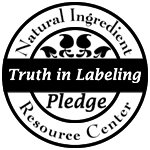
Plastic bottles have been in the news again. Some of you may have already gone through your cupboards getting rid of bottles & containers marked with a #7 on the bottom when a report released in 2003 exposed research conducted in 1998, linking the use of a controversial chemical called Bisphenol-A (BPA) to cell mutation in mice.
Depending who you talk to, BPA is either perfectly safe or a dangerous health risk. The plastics industry says it is harmless, but a growing number of scientists are concluding, from some animal tests, that exposure to BPA in the womb raises the risk of certain cancers, hampers fertility and could contribute to childhood behavioral problems such as hyperactivity.
If you consume canned soups, beans and soft drinks, you also may be inadvertently swallowing residues of a BPA that can leak out of the can linings into your food. BPA has also been found to migrate, under some conditions, from polycarbonate plastic water bottles.
Concerned about BPA leaching into our food & drinks, some of you have already asked what about the products I use on my skin? At Samantharoma, our plastic bottles are made from PET - or polyethylene terephthalate - a form of polyester. PET is the type of plastic labeled with the #1 code on the bottom. PET does not contain BPA nor is BPA used in its manufacture.
Why is PET good?
PET acts much like glass & resists absorbing light, heat & other external sources. Whilst chemicals are undoubtedly used in its production, we believe that PET’s ability to act as a barrier helps protect your product from chemical leaching. PET is also recyclable, more economical than glass & lighter to ship (requiring less gas in transit). Of course fuel is used in its manufacture but if we all recycle (and we DO recycle) we can help lower our carbon footprint ;-)
So what should you do about BPA exposure?
Some scientists urge that action be taken now, "Science is not in the business of demonstrating anything beyond a shadow of a doubt," says Ana Soto, M.D., a professor and researcher at Tufts University School of Medicine in Boston, who has found that BPA alters mammary-gland development in mice. "We cannot wait that long to discover whether this chemical is harming human reproduction and development." However, because government agencies remain unconcerned, it is unlikely that BPA will disappear from consumer products anytime soon.
So yet again it us up to each individual consumer to decide if they wish to avoid or limit exposure to this chemical. I for one, feel like we are bombarded daily with chemical exposure from all different sources. If there is something simple that I can do to reduce my exposure, then I’m going to follow my heart. You should follow yours.
If you need help determining what action to take, read National Geographic’s The Green Guide report. While you’re at this great website, check out what they had to say about deodorant. They even reviewed ours!
Sources:
en.wikipedia.org/wiki/Polyethylene_terephthalate
www.napcor.com/plastic/bottles/whatispet.html
thegreenguide.com/doc/114/bpa
www.petresin.org/key_facts.asp







No comments:
Post a Comment